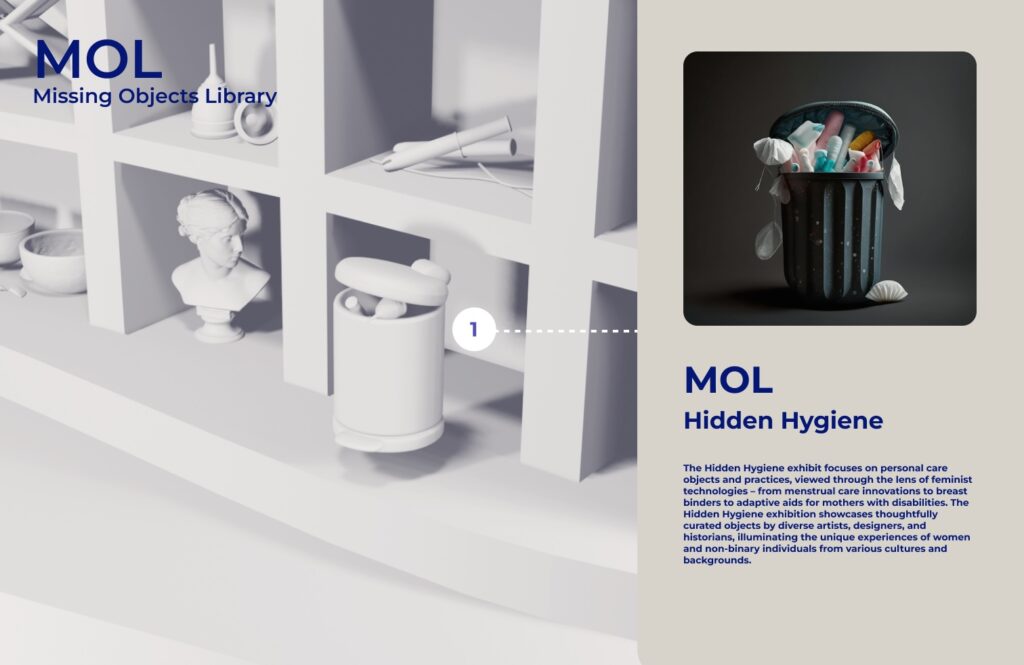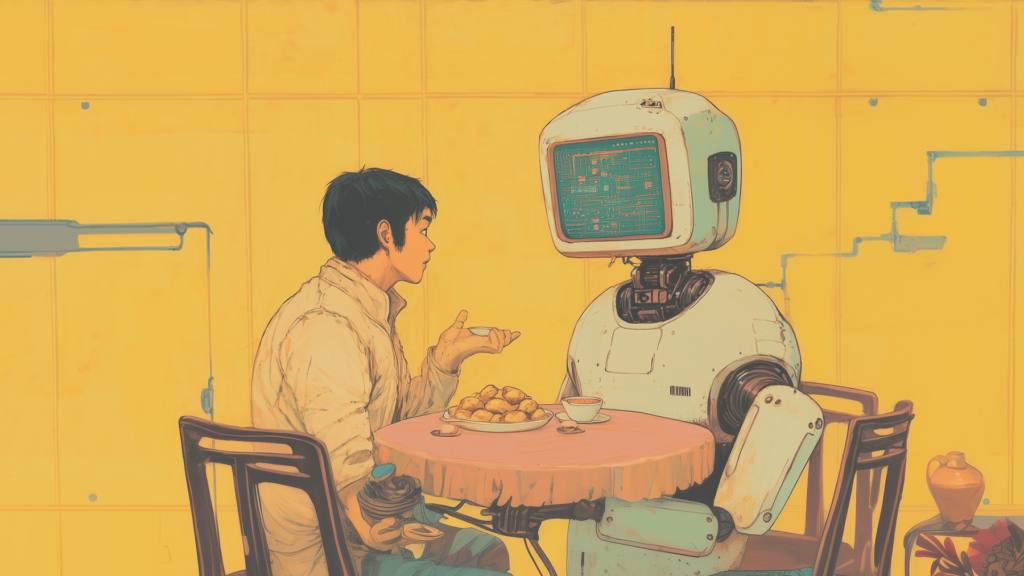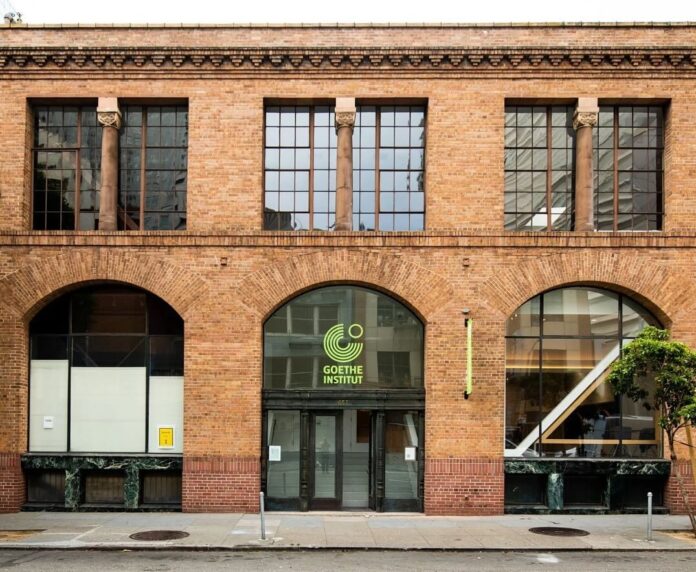After 40 some-odd years in their Chinatown-adjacent Bush Street location, the San Francisco branch of the Goethe-Institut—the German cultural organization which has become an essential part of the city’s arts fabric— has moved into an elegant 1920s masonry office building at 657 Howard Street, owned by Crown Point Press in the heart of SOMA.
With their move comes a public showing of artists assembled in collaboration with the Gray Area arts organization as part of the Institut’s C/Change residency (through November 21). A multi-year cross-cultural exchange initiative inspired in part by the remote performance modalities of the early pandemic, and by an increasingly fraught geopolitical landscape, C/Change connects artists foregrounding technology in their work to resources and mentorship, to “open up new channels for cross-cultural connection in a changing world.”
The research question C/Change poses is this: Can technology be a tool that enables artists to create the just and equitable society they want to see? Not surprisingly, the answers are far-ranging and inventive.
On the surface, an international language school like Goethe-Institut and an arts organization dedicated to foregrounding creative expression in tech like Gray Area may not seem to have a lot in common. Noémie Njangiru, the current director of the Goethe-Institut in San Francisco, sees it differently. “We share a common mission,” she says. “To amplify marginalized voices in technology through the intersection of emerging technology and creative expression.”

As much a cultural center as a language school, the Goethe-Institut has long been a space where the arts have had a stronghold. Curating the long-running Berlin and Beyond German-language film festival, for example, and the many art exhibits, workshops, and intimate performances in their Bush Street gallery. Tech has been a frequent topic in the Goethe-Institut’s global online presence, where think pieces on the intersections of art, activism, and technology proliferate. So much so that the San Francisco-based Gothe-Institut’s own online culture magazine—Step into German—is part of the latest C/Change show.
Other C/Change projects on display utilize technology in the creative process in very different ways. One project, Tasting Tomorrow, is an app envisioning a necessary evolution of family recipes and cultural cookery in a climate-changed world. Users are invited to contribute location data and heritage ingredients in their region and the app, in theory, would suggest possible substitutions.

The app’s data collection phase is still in its early stages, but Tasting Tomorrow—led by San Francisco conceptual artist and philosopher Jonathon Keats—activates memories and sensations that span the ages. Recipes connecting us to the past. Food as a tool of social organizing and cooperation. A future of warmer temperatures but more volatile weather patterns.
Granted, the only real substitution I found offered for future San Francisco was chickpeas for artichokes, but as concepts go, this project spoke to an intersection of my very specific interests in projecting possible climate futures, the culinary arts, and mapping.

Another project wrestling with the past and the unwritten possibilities of the future is the Missing Objects Library, a potent amalgamation of 3-D modeling and intersectional feminist theory. Curated by Professor Jill Miller and Asma Kazmi of the New Media Center at UC Berkeley, the “MOL” reinvigorates the concept of the 3-D “model library”—repositories of digital assets used in game graphics and other environmental design projects.
An assemblage of bespoke models of everyday items you won’t find in other model libraries such as used tampons and chest binders, a fridge full of diasporic Asian groceries, and a server farm labeled “invisible cloud infrastructure,” the MOL rejects the conservatism and lack of cultural exchange inherent in the mainstream models available elsewhere.

These days it’s almost impossible to ignore the specter of AI in the arts, as tools for creativity and productivity begin to blur into each other. So it’s only natural that one of the five projects should engage with these “artificial” tools in the service of human storytelling. In Dragon’s Delusions, Cheng Xu, a curator at the SF Asian Art Museum, and artist Shawn Wang worked with designers KongKee and Lawman Lok to create a platform where participants could use AI as an assistant in the collection of personal and family histories.
“Telling your life story can feel daunting and vulnerable, and people may not see themselves as a ‘storyteller.’” Xu shares. “So, we designed a welcoming and encouraging tool to engage people in conversation and help tell their stories. We hope our tool gives a voice to those often silenced or overlooked.”
C/CHANGE runs through November 21 at the Goethe-Institut, SF. More info here.




